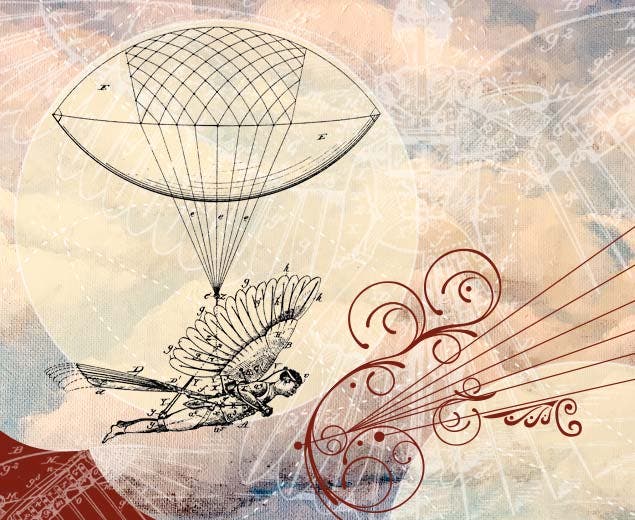
Flying Machines
First Flights
Montgolfier Brothers
The aerial age began in the 18th century when humans took their first flights in hot-air and gas-filled balloons. On September 19, 1783, a balloon designed by two brothers, Joseph-Michel and Jacques-Étienne Montgolfier, launched from the Palace of Versaille in Paris. It was the first flight in history with passengers aboard: a rooster, sheep, and duck. The balloon soared to nearly 1,500 feet in altitude and landed safely 15 minutes after takeoff.
d’Alandres Brothers
Two months later, on November 21, 1783, Jean-François Pilatre de Rozier and Marquis d’Alandres became the first humans to ascend and pilot a balloon. They flew for 25 minutes and landed safely five miles from their starting point. The Montgolfier-built balloon used heat to create lift. A fire built in the carriage burned straw. The hot air, less dense than the atmosphere, would rise, fill the balloon, and send it skyward. When aloft, aeronauts fed straw into the fire to gain lift and then reduced the flames to descend.
Steerable Airships
By the end of the 19th century, gas-filled steerable airships, or dirigibles, had become viewed as a practical means of flight. Brazilian-born aviator Alberto-Santos Dumont took his first balloon flight in 1898 soon after moving to Paris. He was hooked. Over the next three years, he built and flew balloons and then dirigible airships throughout the city, becoming well-known locally for his flights around town. Santos-Dumont’s most famous dirigible flight was a trip around the Eiffel Tower on October 19, 1901. The flight won the Deutsch de la Meurthe Prize of 100,000 francs for the first airship to make the 6.8-mile roundtrip journey between Parc de Saint-Cloud and the Eiffel Tower in 30 minutes or less.
